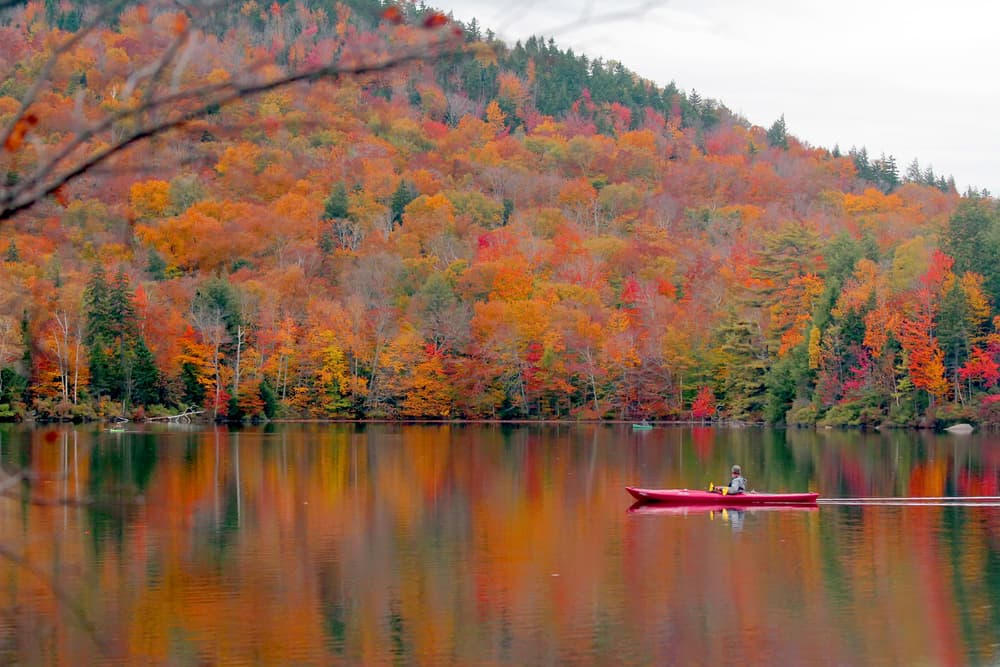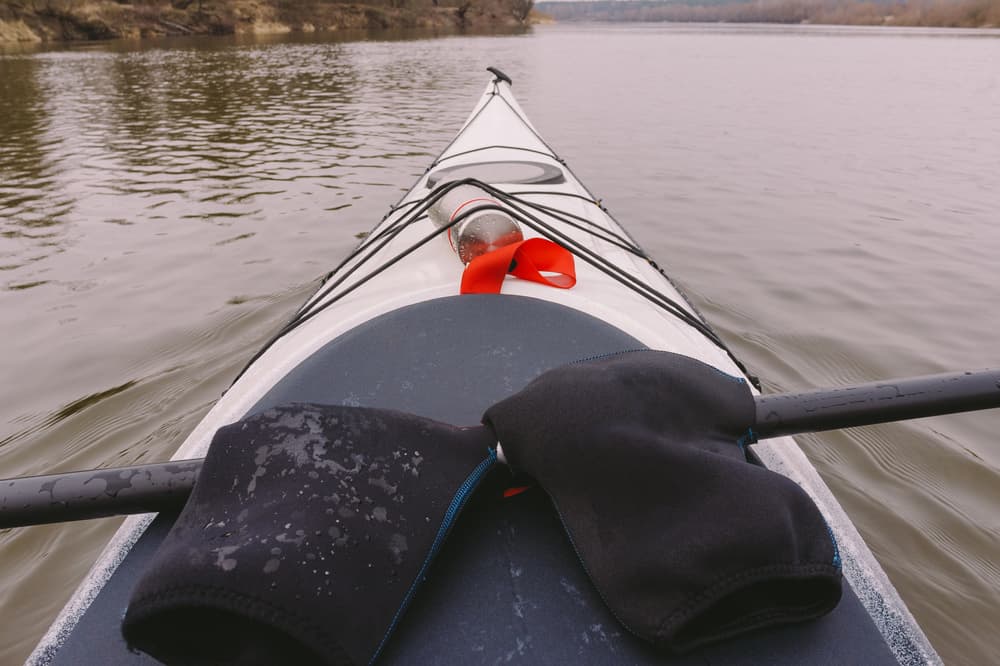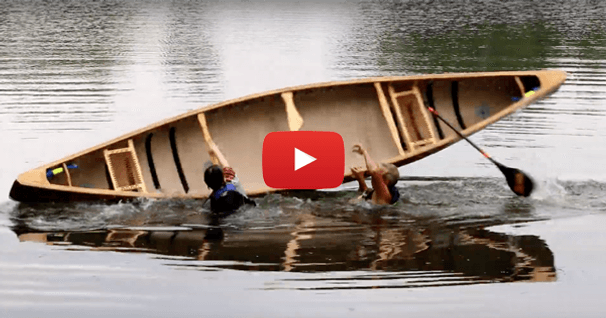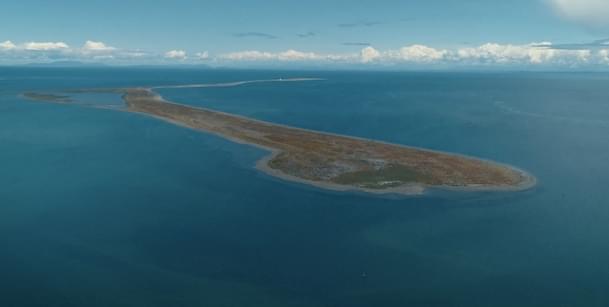What To Wear Paddling In The Autumn

Autumn is one of the most difficult seasons to plan for when it comes to the weather and what to wear paddling. Temperatures can vary significantly daily, and frosty mornings can sometimes give way to stunning and warm afternoons. This is why putting together an outfit in the fall can feel like trying to solve an impossible puzzle.
Paddling in the autumn is one of the most rewarding experiences for paddling lovers. The summer crowds have dwindled by this time, and there is often lots of wildlife, foliage, and tranquility to enjoy this time of year. While paddling in the fall is certainly incredible, it is important you dress accordingly, as proper attire can make or break an autumn paddling excursion.
When paddling in the autumn make sure you wear multiple layers including an insulating middle layer and a water and wind-resistant outer layer. Waterproof shoes are critical. Avoid wearing cotton and other materials that don’t dry quickly. Remember to dress for the water temperature as well as the air temperature. Even in the fall, make sure you remember sun protection in the form of sunscreen, a hat, and sunglasses.
Paddling in the fall months after a hot summer can be absolutely glorious, but it also comes with some added dangers. Water temperatures quickly start to plummet as overnight temperatures linger close to freezing in the autumn. This means your risk of hypothermia and other temperature-related illnesses greatly increases, even if the weather appears warm and pleasant in the afternoon. So if you are planning on some epic paddling trips this autumn, make sure you read through this list to ensure you have a safe, comfortable, and unforgettable time on the water during this season.
10 Items To Remember To Wear When Paddling In The Autumn
1. Dress In Easy To Peal Off Layers
Autumn fashion is all about layers, and this same philosophy applies to your paddling clothing during this season. Weather can fluctuate significantly throughout the day in the fall. This applies to temperature, wind, and precipitation. Layering is key to ensure you are comfortable throughout your paddle as the weather changes, and your body temperature changes as well. There are three essential layers to consider when deciding what to wear paddling in the autumn.
Wicking Fabric For A Base Layer: Wicking fabric is often a manmade material that effectively draws moisture away from the body by absorbing it. This is helpful in a base layer, as you don’t want to be covered in sweat as your heart rate picks up on your paddle. Opt for high-tech polyester that is known for its wicking abilities to ensure your comfort.
An Insulating Second Layer: After your absorbing layer, it is important you have a layer to keep you warm. This can be a fleece-like material or another great insulating material that also dries quickly. The key here is quick-drying material that keeps you warm.
A Protective Outer Layer: Lastly, you want to create a protective shell around your insulating layer. This will come in handy if you experience choppy conditions, strong winds, or even some rain. You want a lightweight material that protects against all elements. But you should also choose clothing that is simple to put on and take off, as well as easy to store.
2. Quick Dry Materials Only
When you paddle for hours on the water no matter how careful you are you are bound to get a little bit wet. Whether it’s water drops from your paddle, a light rain, or small waves splashing upwards, wet clothes are a reality when paddling in the autumn. Embrace this reality by opting for quickie-dry fabrics.
There are lots of great quick-dry fabrics out there, most of which are synthetic. Quick-drying nylon and polyester, as well as fleece, are known for their quick dry abilities. Avoid cotton like the plague. Wool, while warm, takes longer to dry than synthetic fabrics, so it is best to avoid wool while paddling as well.
3. Water Resistant Clothing
In addition to clothing that dries quickly, it is essential you have an outer layer that repels water as best as possible. There are lots of directions you can go, from a rain jacket to a drysuit, to paddling-specific cold weather paddling gear. Your choice will depend on your budget and your specific Autumn climate. Regardless of budget and climate, make sure you have a solid waterproof layer, as this will make your autumn paddling much more comfortable and dry.
4. Wind Protection
As summer gives way to autumn, temperature and weather shifts often result in lots of gusty winds that come and go sporadically. It is critical you are prepared for these windy moments. After all, insulating layers are only effective if there is a protective shell keeping the cold air from penetrating them. Opt for a waterproof layer that is also highly wind-resistant. Ideally, a jacket that is easy to put on and take off, and something lightweight that can pack up into a small bag is ideal.
5. Sun Protection For Eyes And Face
Just because it isn’t beach weather doesn’t mean you are safe from the sun. The sun is still strong well into the autumn, and paddling on reflective bodies of water only intensifies its effects. Because the sun still has powerful UV rays in the autumn, it is important you use strong waterproof SPF sunscreen when paddling in the Autumn. Make sure you cover any part of your skin that is likely to be exposed.
Your skin is not the only organ you need to protect from the sun. Make sure you wear polarized and UV-protectant sunglasses when paddling to avoid any damage to your eyes.
6. Paddling Gloves Or Poggies

Autumn can have some dry air and unforgiving winds. These conditions can be harsh on your hands and fingers. This is where paddling gloves and poggies come in handy. Waterproof addling gloves are a great option for those who like to paddle in all types of weather conditions. If you don’t like to feel constricted by wearing gloves on a nice autumn day, poggies are another option. Either way, ensure you have some quality protection for your hands when paddling in the autumn.
7. A Spare Set Of Clothes in Your Dry Bag
Even if you wear the correct clothing with wind and water resistance and quick dry materials, things can still go wrong. You could capsize, or find yourself in a situation where you need to leave your boat. This is where a spare set of clothing comes in very handy. Make sure you pack an extra base layer and an extra insulating layer. This ensures you can get dry and warm quickly after getting wet.
Shop Our Choices For Best Dry Bags of 2023
8. Insulating Hat With A Brim
Human beings lose most of the heat from their bodies through the head. As midafternoon sunshine gives way to cooler late-afternoon temperatures, having an insulating hat ensures you maintain a healthy body temperature. Hats are also simple to remove and store, so bringing one along should be a no-brainer.
Insulation is just one of the benefits a hat can provide. Hats with a wide brim also offer you additional sun protection. They help block direct rays from reaching your eyes and make it easy to navigate.
9. Waterproof Footwear
It is easy to forget about foot protection when paddling in the autumn, as most people are more concerned with the upper body. But cold wet feet can lead to some serious sickness, low body temperature, and an all-around unpleasant paddling experience. Neoprene booties, water shoes, or other waterproof footwear are essential when paddling in the autumn. You should also remember to bring along an extra pair of socks in your dry bag just in case.
10. PFD
Since paddling in autumn is all about wearing layers, no autumn paddling wardrobe is complete without the most important layer of all - your PFD. In addition to the water and wind resistance and the quick-drying materials, it is essential you have your life vest. Autumn weather can be unpredictable, and cold waters can cause a shock to the system that is harder to recover from than warmer waters.
Choose a PFD that is sized appropriately and fits well with additional layers. Make sure it is easy and comfortable to paddle with it on with the additional clothing. You may even want to consider purchasing a different PFD for colder months to ensure it doesn’t inhibit your stroke or comfort.
What To Avoid Wearing When Paddling In The Autumn
1. Clothing That Is Hard To Remove Or Put On
Remember that when you are paddling, everything is a balancing act. Make sure the clothing you select not only protects you from wind and water but is also easy to put on and take off. This means having clothes with easy-to-use zippers and avoiding clothing that requires lots of effort (or both hands) to take off. Unlike paddling in other seasons, you are almost guaranteed to remove and add layers throughout the day, so pack smart to avoid difficulty along your journey.
2. Clothing Made Of Cotton
Cotton is one of the most common fabrics, and its breathability makes it great in the summertime. But cotton is a terrible material to wear as the weather and water cools. It takes a very long time to dry, and in turn, actually sucks the heat out of your body. So resist any urge to wear cotton in the autumn, and instead wear quick-dry synthetic materials.
3. Outer Layers With No Wind Or Water Resistance
When you pack an outer layer for your autumn paddling excursions, this layer should act as a protective shell or a shield. Therefore, sweatshirts and other jackets that might offer warmth but don’t have quality wind and water protection can do more harm than good. After all, what good is quick-drying fleece if it keeps on getting wet?
4. Scarves And Clothing With Excess Fabric
Scarves and long jackets are signatures of any fall wardrobe. Unfortunately, these items are not a good idea for paddling. Some scarves, like quick-dry fitted infinity scarves, can stay put, but others are likely to get wet or even lost. Remember to keep things practical and fitted so you have lots of room to paddle comfortably.
Related Articles
It’s always a good time to make the choice to bring stand up paddling into your life. It’s a fun,…
When a night-fishing mission goes awry, two kayak anglers learn the importance of staying calm and…
Learn a fast, efficient and stable way to re-enter your canoe after flipping over in deep water.
Dungeness Spit from above, with the New Dungeness Lighthouse in the distance Dungeness…



